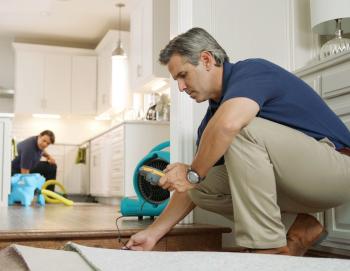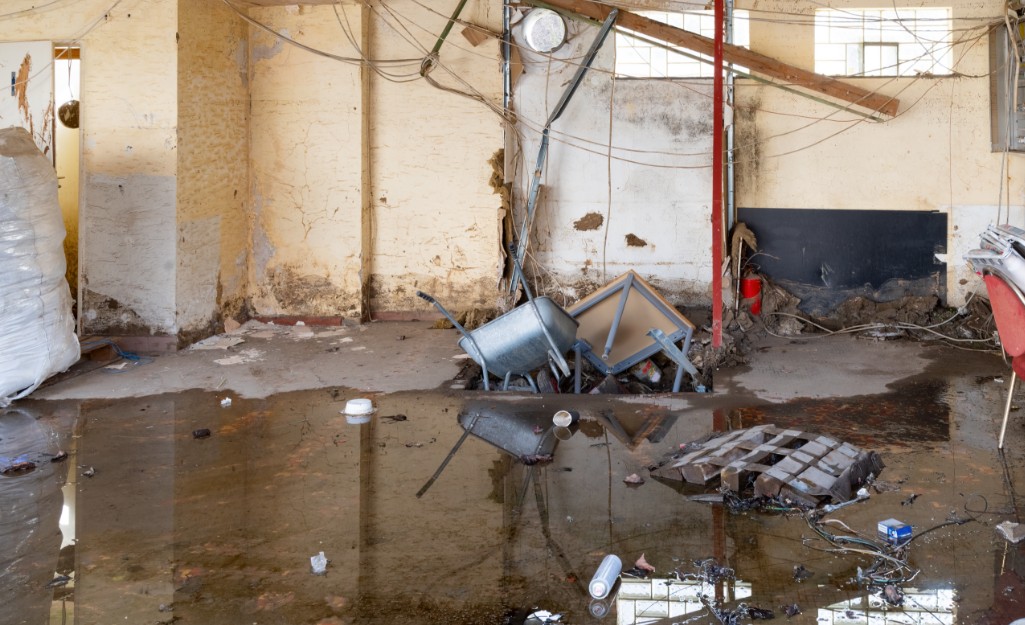Water Damage Restoration 101: Understanding the Process and Price
Water damage can strike unexpectedly, leaving homeowners in a state of complication. Understanding the restoration procedure is necessary for effective recuperation. From evaluating the damage to selecting the right company, each action affects the overall outcome and expense. Factors such as the kind of water damage and seriousness additionally play a significant function. What are the specific methods made use of in reconstruction, and exactly how can one get ready for prospective expenses?
Kinds Of Water Damage

First Assessment and Inspection

Water Extraction Techniques
Complying with the first assessment, efficient water removal methods are employed to minimize damage and stop additional issues. These strategies entail using customized tools such as submersible pumps and industrial-grade vacuums - Mold Remediation After Water Damage. The option of approach depends on the quantity of water existing and the kind of products impacted. For standing water, completely submersible pumps are normally made use of for rapid removal, while vacuum cleaners are ideal for drawing out water from carpets and furniture. Additionally, progressed techniques like water removal floor coverings may be used for hard-to-reach areas - Water Damage Restoration. The objective is to get rid of as much water as possible, lessening the possibility for mold development and architectural damage. Motivate and efficient water removal is necessary in the overall water damage reconstruction process
Drying Out and Dehumidification Process
Once the water extraction is full, the drying and dehumidification process becomes critical to bring back the damaged location. This stage commonly uses industrial-grade dehumidifiers and air moving companies to efficiently decrease moisture levels. The dehumidifiers reel in wet air, eliminating excess moisture, while air moving companies distribute air to increase dissipation. Monitoring devices is often used to track moisture and temperature level degrees, making certain perfect drying problems. The duration of this process can differ relying on the degree of the water damage and environmental variables. It is vital to thoroughly dry all impacted products, consisting of wall surfaces, floor covering, and home furnishings, to click here for info avoid mold growth and structural damage. Proper execution of this step is important for a successful restoration outcome.
Cleansing and Disinfecting Afflicted Locations
An extensive preliminary analysis and assessment of influenced areas is essential to recognize contamination degrees as soon as the drying out procedure is total. Flood Cleanup Services. Efficient cleaning techniques and proper products have to then be employed to eliminate particles and spots. Lastly, sanitization and disinfection methods are vital to assure that unsafe virus are eliminated, restoring the room to a risk-free condition
Preliminary Evaluation and Examination
Before beginning any kind of remediation initiatives, a detailed preliminary assessment and examination of the impacted locations are crucial for effective cleansing and sanitizing. This process involves recognizing the degree of water damage, identifying the resource of the water intrusion, and evaluating the materials influenced. Examiners generally seek indicators of mold and mildew development, architectural integrity issues, and harmed items. The evaluation likewise consists of examining wetness degrees using specific tools to guarantee no concealed water pockets continue to be, as these can result in more complications. Documenting the searchings for is important for preparing the following action in the restoration process. An in-depth preliminary analysis enables repair professionals to create a targeted strategy for reliable cleaning and sanitizing, eventually decreasing damage and health risks.
Cleaning Up Strategies and Products
Reliable cleansing and sanitizing of water-damaged areas require a variety of methods and items customized to the certain materials affected. For permeable surfaces like drywall and carpets, extraction methods are important to eliminate excess wetness, complied with by deep cleaning with specialized detergents. Non-porous materials such as tile or metal can be cleaned making use of commercial-grade cleaners that effectively remove impurities. Heavy steam cleaning is another effective technique, specifically for carpets and upholstery, as it makes use of heats to remove germs and mold (Water Damage Restoration). Furthermore, environmentally friendly items are increasingly prominent for their safety and efficacy - Water Damage Restoration. Ultimately, selecting the suitable cleaning methods and products not just assures instant sanitation yet also aids in preventing further damage and health hazards related to water breach
Sanitization and Disinfection Methods
When addressing water damage, correct sanitization and disinfection approaches are vital to guarantee the safety and security and health and wellness of the affected environment. After first cleaning, surfaces must be treated with proper disinfectants to remove microorganisms, mold, and microorganisms that prosper in damp conditions. Typical approaches include using EPA-approved chemical disinfectants, which can be applied with splashing or cleaning strategies. In addition, ultraviolet (UV) light systems can efficiently disinfect areas by counteracting microbes without extreme chemicals. The selection of method usually depends on the kind of products influenced and the extent of contamination. Ultimately, extensive sanitization not only recovers a secure living area however also assists protect against future wellness threats associated with remaining dampness and mold and mildew development.

Repairs and Restoration Options
Examining the damage brought on by water direct exposure is important for establishing the appropriate repair work and repair alternatives. Home owners may face different problems, including harmed drywall, distorted flooring, and jeopardized structural elements. Relying on the degree of the damage, repair services may involve replacing areas of drywall, mounting brand-new floor covering, or enhancing architectural light beams. In cases of extreme damage, complete replacement of affected products could be necessary. Additionally, professional restorers typically suggest utilizing wetness meters to examine concealed wetness degrees before choosing the very best strategy. It is necessary to act promptly to stop mold growth and more degeneration. Selecting the best alternatives not just restores the building however additionally guarantees lasting security and functionality.
Variables Affecting Restoration Expenses

The extent of water damage straight influences the restoration costs house owners can anticipate to sustain. Factors such as the source of the water, the duration of direct exposure, and the affected materials considerably influence prices. For circumstances, tidy water damage from a busted pipeline is normally less expensive to recover compared to damage triggered by sewer. Additionally, the level of contamination dictates the demand for specialized cleansing and disposal solutions, additionally boosting expenditures. Geographic location also plays a role, as regional labor prices and schedule of restoration solutions can differ. Ultimately, the necessity of the response impacts costs; quicker interventions commonly lead to lower overall costs by preventing additional damage. Understanding these variables is vital for homeowners when approximating repair expenses.
The three key kinds of water damage are classified based on contamination levels: clean water, grey water, and black water. A detailed preliminary evaluation and inspection are essential steps in the water damage remediation process. For standing water, completely submersible pumps are usually utilized for quick removal, while vacuums are excellent for drawing out water from rugs and furniture. The level of water damage straight affects the restoration sets you back property owners can expect to incur. Clean water damage from a broken pipe is generally much less costly to recover compared to damage triggered by sewage.